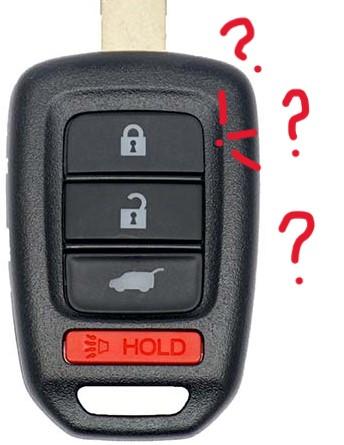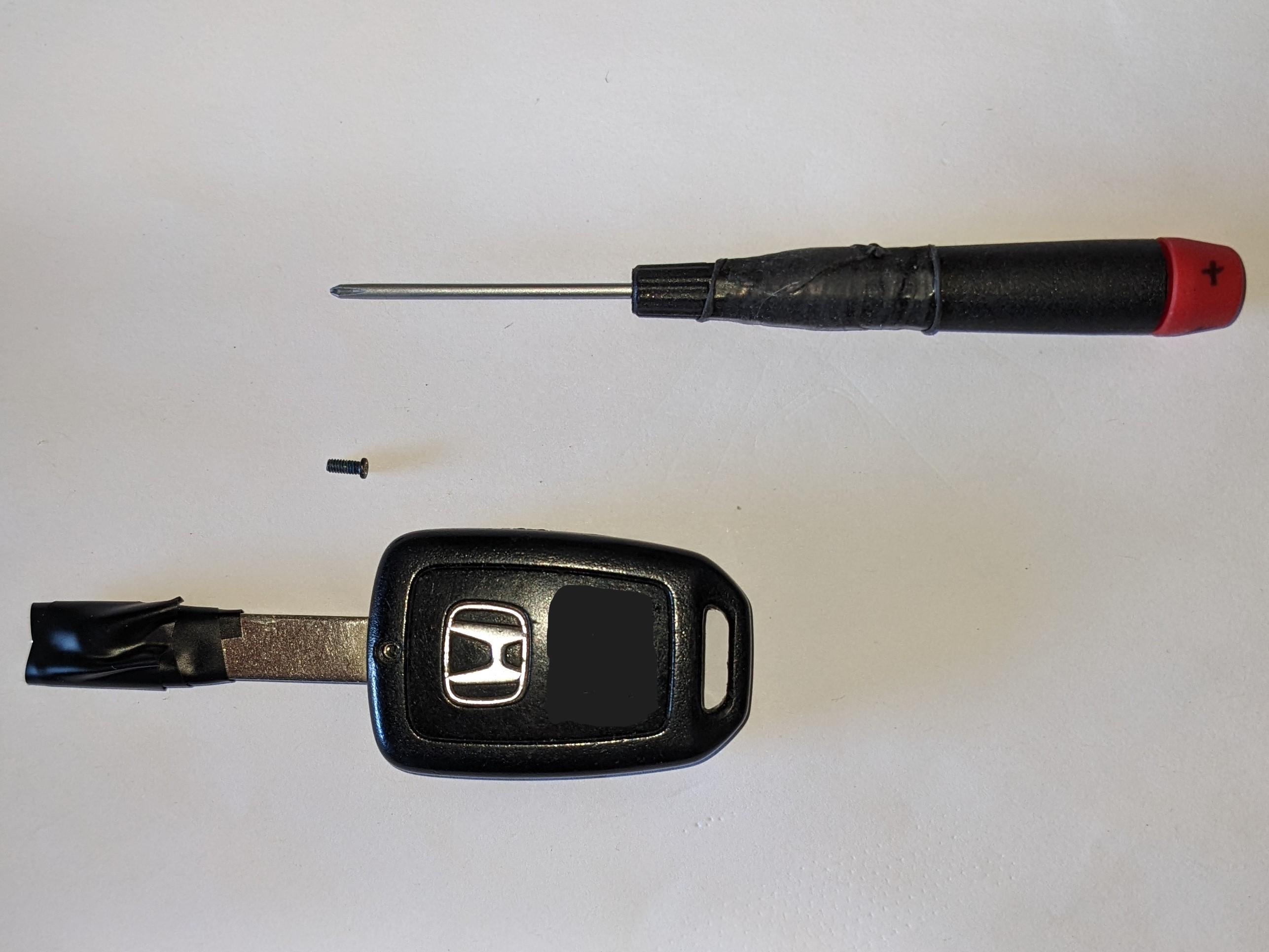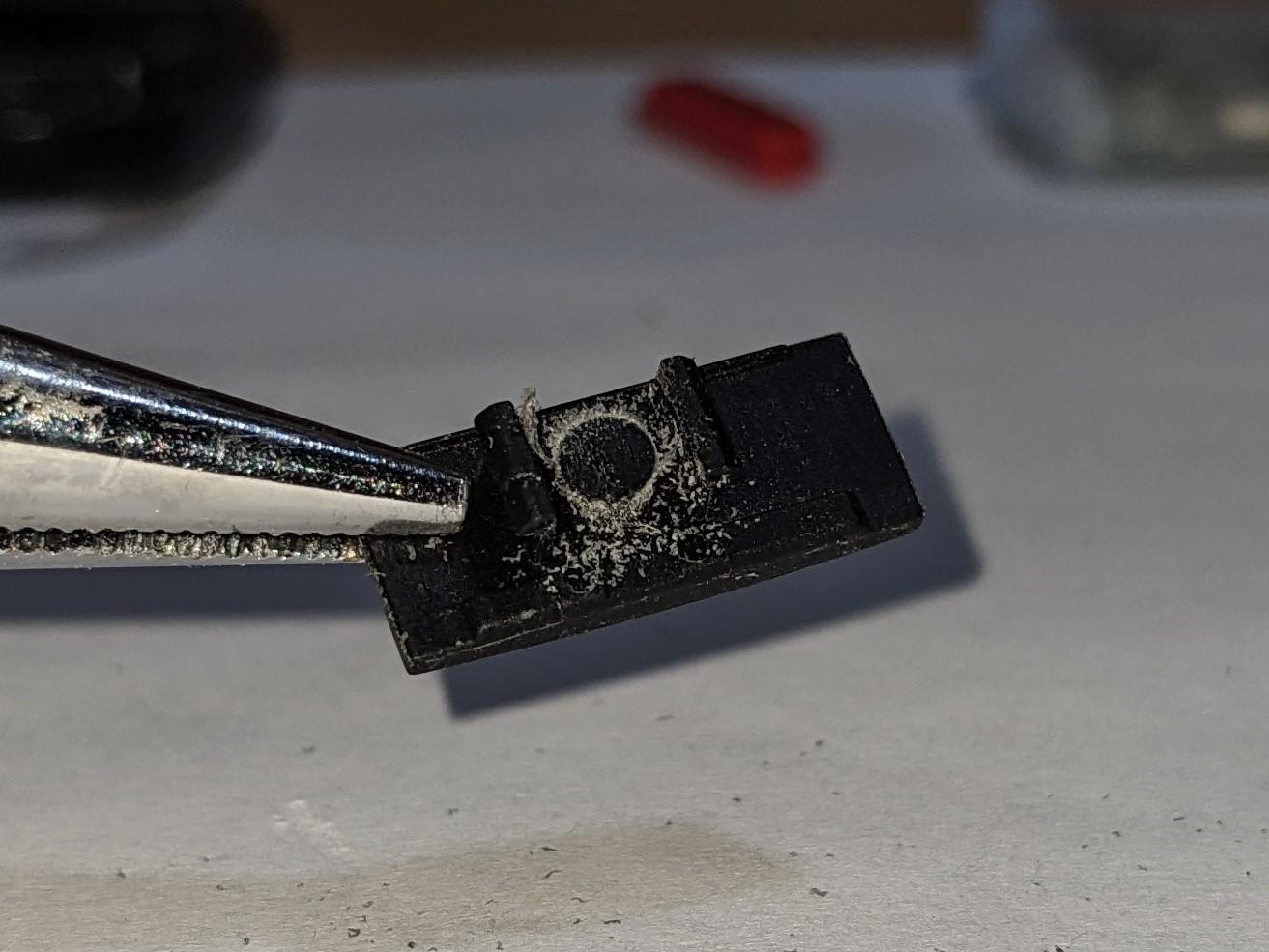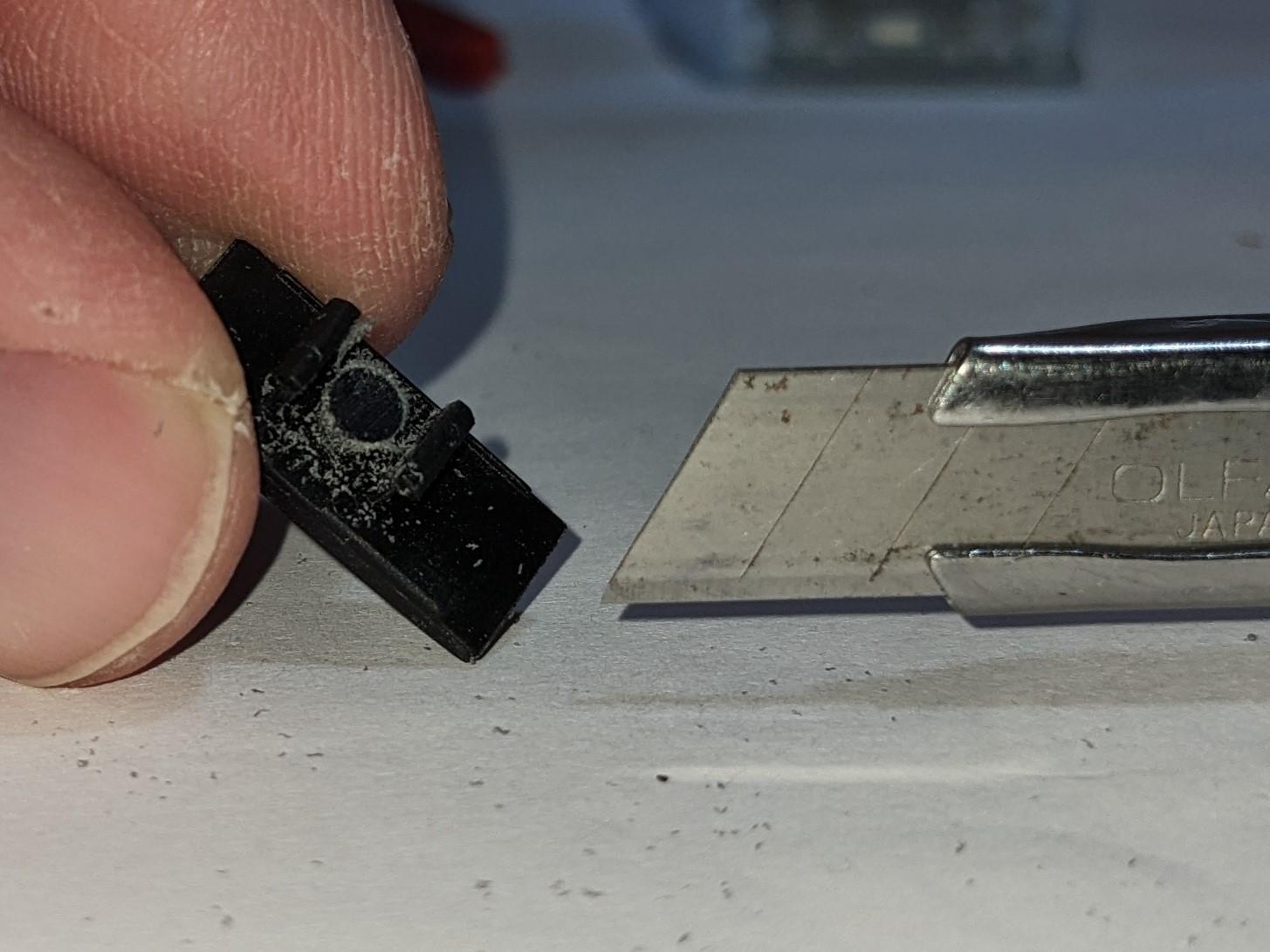Key Fob Accidental Button Press Fix
by Flying Squirrel in Workshop > Cars
619 Views, 0 Favorites, 0 Comments
Key Fob Accidental Button Press Fix

Does your car lock or unlock at seemingly random times? Have you needed to replace your fob battery, only to have it run out just a little while later? Have you found your car unlocked when you thought for sure it was locked?
It could be the key fob. More specifically, it could be the switches in the key fob being activated when you do not expect it. Mine was doing that, and it was a headache until I employed this fix.
I discovered it was very easy to activate the lock and unlock buttons on my key fob - even a light brush over the lock button would trip the switch underneath, and the unlock button was only a little bit better. It became so bad that I would keep the key in a separate pocket, and I would check the car whenever it rained to make sure the windows were still rolled up (thanks, Honda).
In this Instructable, I will show you how to make the unlock button a little less sensitive by filing down the button plunger. This will help make the button function as intended without changing the exterior of the fob or adding anything to it.
Important Notes:
- Modifying fob buttons may disable them. Use caution and proceed at your own risk.
- These instructions are for Honda-style key fobs with hard plastic buttons. Other makes and models may use different button styles and materials, which may not work with this fix.
- This fix does not address any electrical problems the fob may be experiencing.
- The instructions below assume that the key fob in question is in otherwise good working order.
Supplies

Tools & Supplies Needed:
- A key fob to modify
- Small Phillips (+) screwdriver
- Magnet to hold the screw (optional, but recommended)
- Flat head (-) screwdriver
- Alcohol
- Cleaning swab (Q-tip)
- Toothbrush
- Small flat file
- Small sharp knife
- Calipers
Remove the Screw

Use the small Phillips (+) screwdriver to remove the screw from the back cover. Place the screw on the magnet for safe keeping.
Pop the Cover Open


Find the notch on the side of the cover. Insert the flat head (-) screwdriver into the notch and twist firmly to pop open the cover. Place the back cover (the one with the battery) to the side for now.
*Pro tip - You can easily replace the battery at this stage. Just pop out the old one with your screwdriver and pop in the new one.
Remove the Circuit Board


Use the flat head screwdriver to push on the red button. This will push the button and circuit board out of the front cover. Be sure to keep the circuit board and silicone seal together. Set the circuit board, seal, and red button to the side for now.
Locate and Remove the Offending Button


This Instructable shows how to modify the "Unlock" button, but the same procedure applies to the "Lock" and "Trunk Release" buttons. The "Unlock" button is the one in the middle.
Push carefully but firmly on the snap latch as shown using a screwdriver. The button will pop loose.
Measure the Plunger's Original Height


The "plunger" is the cylindrical feature between the snaps. It is the feature that actually pushes the switch on the circuit board.
Measure the plunger height and write it down. You can do this using calipers (as shown) or a ruler, but either way, you need to know what the original plunger height is so that you only remove a small amount of material.
Do not skip this step. It is too easy to accidentally take off too much material and render the button useless.
In my case, the original plunger height is 4.2 mm (0.165"), inclusive of the entire button.
File It


Caution: Modifying buttons may disable them. Use caution and proceed at your own risk.
If that statement scares you, skip ahead to General Cleanup (Step 9).
If not:
File the top of the plunger using the small flat file using steady, even strokes. Keep the strokes parallel to the plunger face as much as possible. You may want to turn the button around so that you're filing evenly from both sides.
Be sure to only file the plunger - the snaps need to stay intact.
Measure the Plunger's New Height

It will not take long to file the plunger, so be sure examine your work and measure the new height frequently between filings. I only removed 0.37mm (0.015"), which worked well when I tested the button.
Button Cleanup


Use the small knife to carefully remove any filings from the plunger, then use the toothbrush to remove any remaining debris.
General Cleanup

Now is a good time to clean up any other dirt or gunk that has found its way into your key. Use the toothbrush, swab, and alcohol to give your soon-to-be renewed key a good cleaning, paying special attention to the crevices around the buttons and cover corners.
Reassembly
Reassembly follows the disassembly process in reverse.
- Snap the modified button back into place, making sure you have the correct orientation
- Place the red button back in its place on the front cover
- Push the circuit board and seal into place in the front cover
- Snap the back cover onto the front cover
Do not install the screw yet. At this point, you're in a good spot to test your button - if it needs more filing, redo the process starting at Step #2.
Once you're satisfied with the results, install the screw.
Congratulations! You've just made your key fob a little less sensitive and hopefully a lot more user friendly.